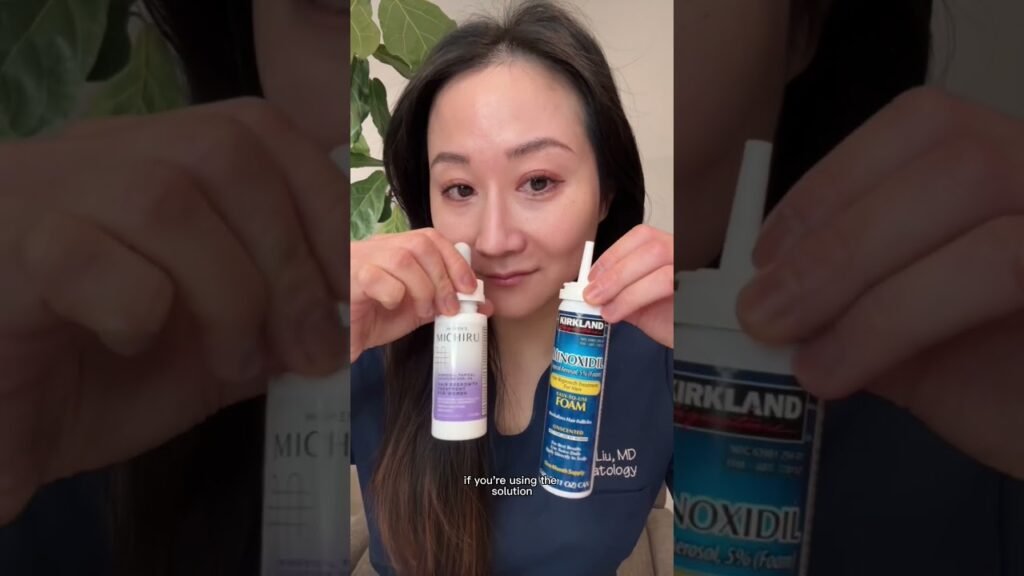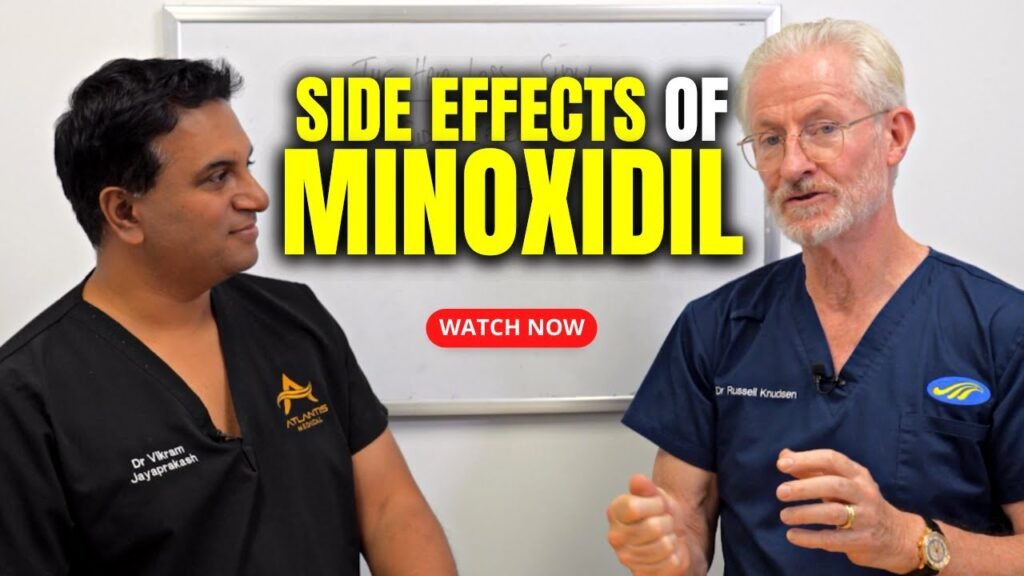Understanding Minoxidil and Its Effects on Skin Health
Minoxidil is a well-known topical medication primarily used to treat hair loss in both men and women. It is commonly found in over-the-counter products such as Rogaine. While its primary function is to stimulate hair growth, understanding its effects on skin health is essential for those considering its use. When applied to the scalp, minoxidil works by widening blood vessels, which increases blood flow to hair follicles and encourages hair growth. However, this action can also have implications for the surrounding skin.
Potential Skin Reactions
Users of minoxidil may experience various skin reactions, particularly if they have sensitive skin. Common side effects include dryness, itchiness, and redness at the application site. These reactions occur because minoxidil can cause the skin to become irritated, especially if it is not used as directed. In some cases, users may develop contact dermatitis, which manifests as a rash or persistent irritation. Its crucial for individuals to perform a patch test before applying minoxidil extensively to ensure they do not have an adverse reaction.
Minimizing Skin Irritation
To minimize skin irritation while using minoxidil, it is recommended to follow a few precautionary measures. Firstly, users should ensure that the skin is clean and dry before application to prevent any unwanted interaction with other substances. Additionally, applying a moisturizer after minoxidil has dried can help combat dryness and maintain the skins natural barrier. It is also important to avoid using other topical treatments on the same area unless advised by a healthcare professional, as this can exacerbate irritation or cause unwanted chemical interactions.
In summary, while minoxidil is effective for hair growth, its effects on skin health should not be overlooked. By understanding potential skin reactions and taking steps to minimize irritation, users can make informed decisions and maintain healthy skin while benefiting from this popular hair loss treatment.
Common Signs of Dry Skin Due to Minoxidil Use
Minoxidil, a popular topical treatment for hair loss, can sometimes lead to dry skin as a side effect. One of the most noticeable signs is flaking or peeling of the skin in the area where the solution is applied. This can often resemble dandruff, especially when the product is used on the scalp. The dryness can make the skin appear as though its shedding, which might be more pronounced during the initial weeks of use as your skin adjusts to the treatment.
Another common symptom is itchiness. Many users report experiencing an itchy sensation in the treated areas, which is often accompanied by a feeling of tightness or discomfort. This itchiness can sometimes lead to scratching, which might exacerbate the dryness and potentially lead to irritation or redness. Its crucial to manage this itchiness carefully to avoid further skin issues.
In some cases, users may notice redness or irritation in addition to dryness. This is usually a result of the skins reaction to the active ingredients in minoxidil, which can sometimes be harsh, especially on sensitive skin. Redness might be accompanied by a burning sensation, indicating that the skin barrier might be compromised. If you notice persistent redness, it may be beneficial to consult with a healthcare professional to discuss potential adjustments to your regimen.
How to Identify If Minoxidil Is Causing Your Dry Skin
Minoxidil is a popular treatment for hair loss, but it can sometimes lead to side effects such as dry skin. If youve started using minoxidil and noticed changes in your skin, it’s essential to determine if this medication is the culprit. Here’s how you can identify if minoxidil is causing your dry skin.
Monitor the Timing of Symptoms
One of the first steps in identifying if minoxidil is causing dry skin is to observe the timing of your symptoms. Dry skin often develops shortly after starting or increasing the dosage of minoxidil. If you notice your skin becoming dry within a few days to weeks of using the product, this correlation may indicate that minoxidil is the cause. Keep a diary to track when you apply the treatment and when symptoms appear or worsen.
Examine Affected Areas
Pay attention to where the dryness occurs. Minoxidil is typically applied to the scalp, so if you notice dryness specifically on the scalp or areas where the product may drip, this could be a sign that minoxidil is affecting your skin. However, if dry skin appears in unrelated areas, consider other factors that might be contributing to the issue, such as changes in weather, skincare products, or diet.
Check for Other Symptoms
In addition to dryness, be on the lookout for other skin changes such as redness, itching, or flaking. These symptoms can often accompany dry skin and might provide further evidence that minoxidil is the cause. If you experience a combination of these symptoms, it may be time to consult with a healthcare professional to confirm the cause and discuss potential solutions.
Effective Remedies for Combating Dry Skin from Minoxidil
When using Minoxidil for hair growth, many individuals experience dry skin as a side effect. To alleviate this discomfort, its crucial to incorporate effective remedies into your skincare routine. One of the primary steps is to use a gentle, hydrating moisturizer immediately after applying Minoxidil. Opt for products that contain hyaluronic acid, glycerin, or ceramides, as these ingredients are known for their ability to lock in moisture and repair the skins barrier. Apply the moisturizer while your skin is still damp to maximize hydration.
Incorporate Hydrating Serums
In addition to moisturizers, consider adding a hydrating serum to your skincare regimen. Look for serums enriched with antioxidants and soothing agents like aloe vera or chamomile. These ingredients can help calm irritated skin and provide an extra layer of moisture. Apply the serum before your moisturizer for the best results. Regular use can significantly reduce the dryness and flakiness caused by Minoxidil, promoting healthier and more comfortable skin.
Adjust Your Application Technique
Sometimes, the method of applying Minoxidil can contribute to dry skin. Ensure that youre using the recommended amount and applying it directly to the scalp rather than allowing it to run onto your face or neck, where it can cause additional dryness. After application, thoroughly wash your hands to prevent accidental transfer to other areas of your skin. If dryness persists, consider reducing the frequency of application or consulting with a dermatologist for personalized advice. These adjustments can help minimize the adverse effects on your skin while allowing you to continue benefiting from Minoxidils hair growth properties.
When to Consult a Dermatologist for Minoxidil-Induced Dry Skin
Minoxidil is a widely used treatment for hair loss, but it can sometimes lead to side effects such as dry skin. Understanding when to consult a dermatologist is crucial for managing this condition effectively. If you notice persistent dryness that does not improve with over-the-counter moisturizers, it may be time to seek professional advice. Persistent dryness can lead to more severe skin issues, including irritation and flaking, which can compromise the overall health of your scalp.
Signs That Require Dermatological Attention
While mild dryness might be manageable at home, certain symptoms warrant a consultation with a dermatologist. If your dry skin is accompanied by redness, itching, or swelling, it could indicate an allergic reaction or an intolerance to minoxidil. Additionally, if you experience any signs of infection, such as oozing or crusting, its important to get medical advice promptly. A dermatologist can help determine whether these symptoms are directly related to minoxidil use or if there are other underlying causes.
Consulting a Dermatologist for Treatment Options
A dermatologist can offer tailored solutions for managing minoxidil-induced dry skin. They might recommend prescription-strength moisturizers or topical treatments to alleviate symptoms. In some cases, a dermatologist might suggest adjusting the frequency or concentration of minoxidil application to reduce side effects. By consulting a dermatologist, you can ensure that your treatment plan is both effective for hair growth and safe for your skin health.


